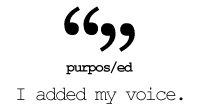 The purpose of education is to provide opportunities for all children to meet their fullest potential. That’s not happening. The dropout rate in the United States is higher than ever. More children are left behind now since the law No Child Left Behind. Now we’re Racing to the Top expecting all children to be at grade level by 2014.
The purpose of education is to provide opportunities for all children to meet their fullest potential. That’s not happening. The dropout rate in the United States is higher than ever. More children are left behind now since the law No Child Left Behind. Now we’re Racing to the Top expecting all children to be at grade level by 2014.
Schools are designed the same way they were hundreds of years ago. The teacher is delivering instruction and facts very similar to the lessons they taught with an overhead projector or chalkboard. Schools were designed after the factory model starting in the 1800s. Grouping by age meant a teacher would have more control over their classroom like a manager in a factory behind closed doors. Standards were developed so at each grade level, students at one age would learn skills and attain specific knowledge that would prepare them to move to the next level. Just because one child is at a five year level doesn’t mean that all five year olds think alike or have similar prior knowledge.
Each child learns at different rates, and has different learning styles and intelligences. One six year old may be reading and writing fluently where another has never had the opportunity to read at home nor owns books and may not even know the letters of the alphabet. Since No Child Left Behind legislation, instruction is more teacher directed with the focus on increasing scores. Textbook companies created content that taught to the test. Several of the textbook companies own or are closely tied to the testing companies.
My dream is for every child to be in control of their own learning. The purpose of education needs to shift to the learner learning in any environment.. Now with digital textbooks, online courses, Web 2.0, social media, and access to everything a learner needs at their fingertips, the purpose of education is changing.
We cannot continue to deliver instruction feeding students facts. We need to rethink how to structure learning. Does it have to be at a school? What if students could review what they need to learn by the end of the year and collaborate with their teacher, peers, and parents to design real-world engaging and innovative activities? Students should be able to assess their prior knowledge and be able to challenge a class so they move at their own speed.
Let’s redesign schools into learning centers similar to Reggio Emilia schools. Teachers as observers and co-learners. Students ask questions that mean something to them. Everything is inquiry-based. This approach can be adapted for K-20 even if you base it on standards. Students can learn at a higher level if they are motivated. Look at collecting evidence of learning in an ePortfolio posted online and showcasing projects that mean something to the world so students celebrate what they know and do. We can bring joy back to learning and create amazing citizens who collaborate on global projects.


